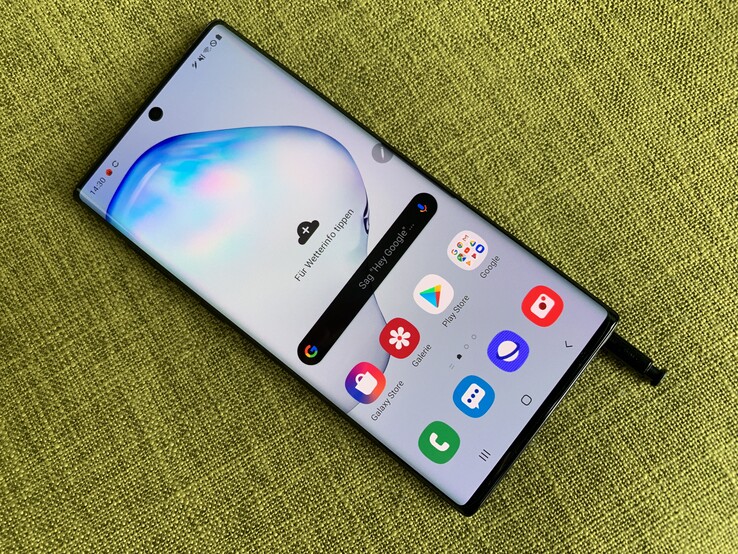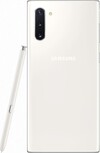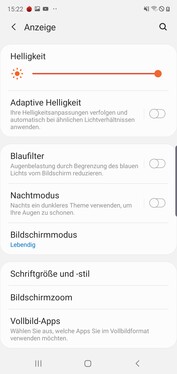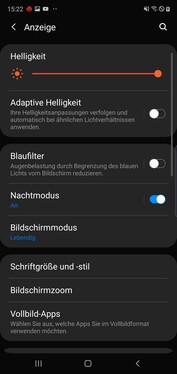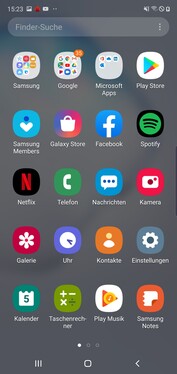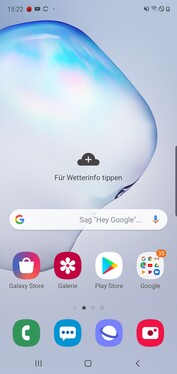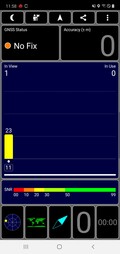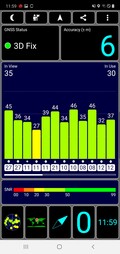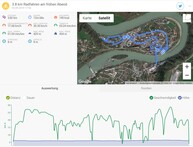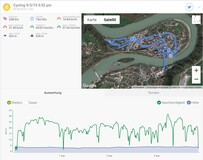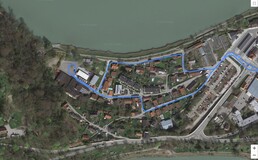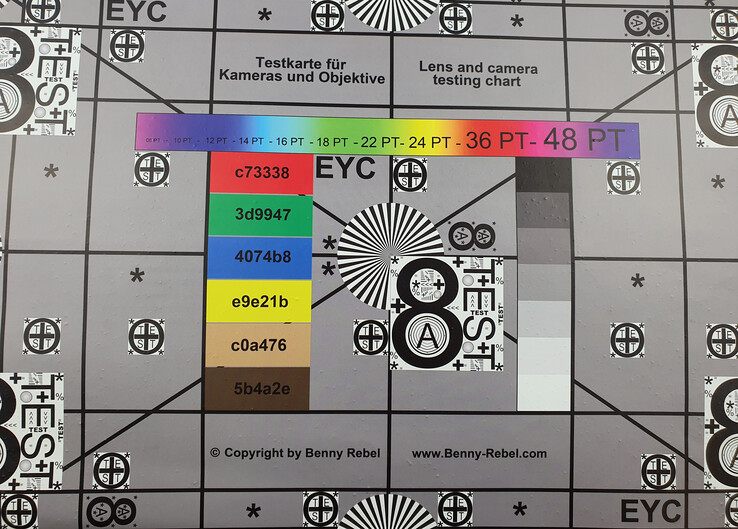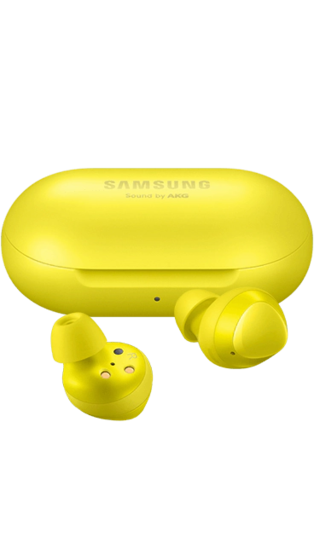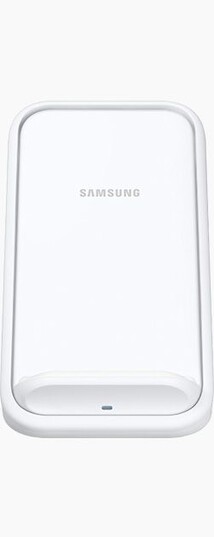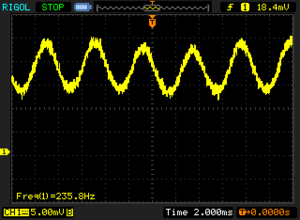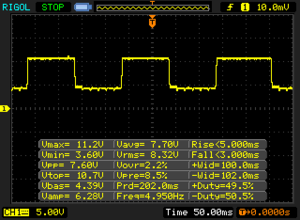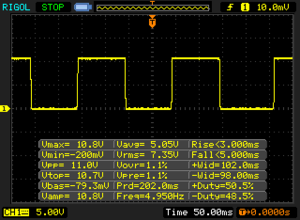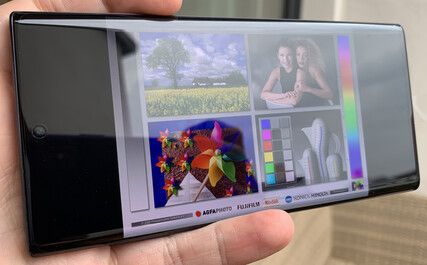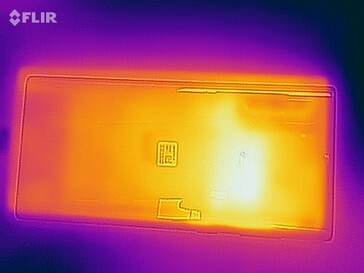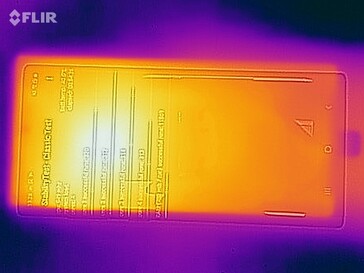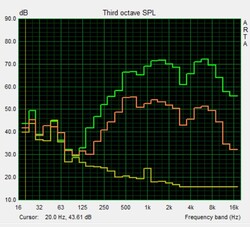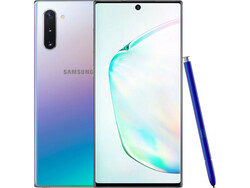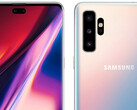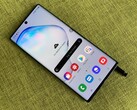Samsung Galaxy Note 10 Smartphone Review: Still the best business smartphone?
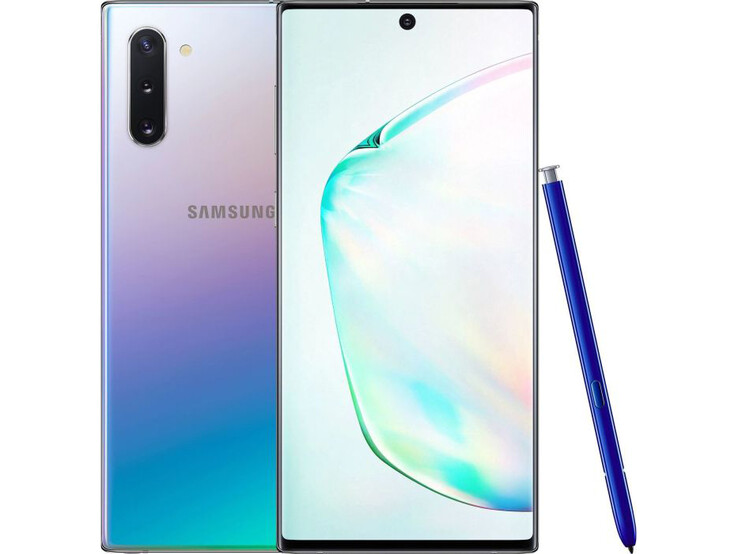
Every year, thousands of Samsung fans await the next iteration of the Galaxy Note, Samsung’s premier smartphone series. This year, the 10th generation of Samsung's flagship comes to market with many of the virtues of its predecessors like an S Pen, a big screen and technical innovations. However, the 10th generation marks a departure for the Galaxy Note, with Samsung introducing two models this year alongside 5G SKUs too. The Note 10+ is better equipped than the Note 10 and correspondingly is more expensive.
As you may have already read or heard, is the Note 10 merely a stripped-back version of the Note 10+, and perhaps not worthy of the Note branding at all? We shall compare the Note 10 against the Galaxy Note 9, Apple iPhone XS Max, Huawei Mate 20 Pro and much cheaper upper-midrange devices like the OnePlus 7 Pro and Xiaomi Mi 9T Pro to find out. You can also add more comparison devices to our tables, for reference.
Changelog
- 08.28.2019: Live review started.
- 09.02.2019: Case, Software, Input Devices & Operation, Performance & Verdict sections expanded. Communication & GPS and Speaker sections added.
- 09.04.2019: Display, Temperature, Speakers, Display, Performance and Power Consumption sections updated.
- 09.04.2019: Battery Life, Power Consumption, Temperature and Benchmarks sections updated.
- 09.05.2019: Gaming and GPS sections added.
- 09.07.2019: Live Review finished.
Case
The Note 10 is a glass and metal sandwich à la most other modern smartphones, with the front and back glass also being prone to picking up fingerprints. The device currently comes in black, rosé and a gradient finish, which Samsung markets as Aura Black, Aura Pink and Aura Glow, respectively. The South Korean manufacturer announced a white version called Aura White online too, but this is unavailable at the time of writing as is a turquoise variant. The Note 10 is IP68-certified against the ingress of dust and liquids too, but you can still expect the device to shatter or be damaged if you drop it.
The Note 10 boasts a 91% screen-to-body ratio, which Samsung has achieved by minimising the display bezels and embedding the front-facing camera within the display. The device is also thinner than all but the iPhone XS Max of our comparison devices at 7.9 mm, with it weighing a mere 168 g too.
Overall, the Note 10 is significantly smaller than all our comparison devices, including the Galaxy Note 9. The latter does have a 6.4-inch display though, so it should come as no surprise that the 6.3-inch Note 10 is at least slightly smaller than its predecessor. The Note 10 feels good in hand because of the premium materials that Samsung has used. Our review unit feels sturdy too, although we can get the device to creak if we apply a decent amount of pressure. We doubt most people will encounter this in daily use.
Connectivity
The Note 10 comes with 8 GB of RAM and 256 GB of UFS 3.0 flash storage, a standard combination for a 2019 flagship. However, the OnePlus 7 Pro is just as well equipped as the Note 10 while costing 190 Euros (~US$211) less than Samsung’s latest flagship. Moreover, offering only one storage and RAM combination is rather unusual for Samsung, with it usually offering at least two options as it did for the Galaxy Note 9.
Our review unit has two nano-SIM card slots, although Samsung also sells a single-SIM variant in some countries. As we mentioned earlier, the Note 10 has no microSD card reader, forcing people to step up to a Note 10+ if they want this year’s Galaxy Note and expandable storage.
As expected, the Note 10 comes with a USB Type-C port. Samsung could have set the Note 10 apart from the competition by equipping the device with a 20 Gb/s Type-C port, but it has opted for a slower 5 Gb/s version instead, which is disappointing. Likewise, the Note 10 is the first device in the series to exclude a headphone jack, so you must use the included Type-C adapter in the box if you plan to use traditional headphones.
Software
The Note 10 ships with One UI, Samsung’s custom version of Android 9.0 Pie. We have covered the OS extensively in our Galaxy S10 and S10+ reviews earlier this year, so please see these for our full thoughts on One UI. Overall, while One UI looks modern and tidy, it comes with plenty of bloatware, including in-house and third-party apps.
Samsung had pushed out the August 2019 set of security patches to our review unit at the time of testing, which were the most recently available patches. The Note 10 comes with Samsung Knox with preinstalled, which is an enterprise security package that combines hardware and software security solutions.
Incidentally, Samsung has reached an exclusive agreement with Discord, which brings Samsung account integration to the gamer-focused voice and chat app. The Note 10 also has an exclusive Discord overlay in games, while its Game Launcher app integrates Discord chats. Samsung plans to bring this to other handsets soon too. The Note 10 is L1 Widevine-certified as well, meaning that it can stream DRM-protected content from services like Amazon Prime Video and Netflix.
Communication & GPS
The Note 10 supports all modern Wi-Fi standards, while its MIMO antennas theoretically allow the device to achieve 1,733 Mb/s on Wi-Fi 5, although it could hit even faster speeds using Wi-Fi 6. Our Linksys EA8500 reference router supports up to the older Wi-Fi 5 standard, but the Note 10 could only average around 400 Mb/s in our iperf3 Client Wi-Fi tests. We suspect that this is a software issue, as the Note 10 currently has up to 20% worse Wi-Fi performance than its predecessor, which would be unusual. We experienced similar issues with our Mate 20 Pro review unit too, which Huawei fixed with a software update.
Despite this, websites and media content load quickly with the Note 10 next to our test router. Our review unit still maintains around half reception when placed 10 metres and three walls away from the router, so you should experience no Wi-Fi dropouts in daily use.
The Note 10 supports even more LTE bands than its predecessor, although Samsung has dropped support for Bands 14 and 18, which were only being used increasingly sparingly in the US and Japan. Bands 13 and 17 have replaced 14 and 18 in North America, so you should experience no LTE coverage issues when on intercontinental trips. However, the OnePlus 7 Pro, for example, has wider LTE coverage than the Note 10 despite the huge price disparity between the two devices, making the former more flexible when travelling than the latter.
Subjectively, our Note 10 review unit seems to have better LTE reception than the Galaxy Note 9 on the German D2 network. The former generally achieves faster download speeds over LTE than the latter too.
The Note 10 struggled in our GPS tests too, with it unable to locate us indoors. It failed to do so even when we stood next to a window, which is unusual for a flagship smartphone. Its location accuracy improved to six metres when we tested it outside, but that is poor compared to other devices like the OnePlus 7 Pro and the Mate 20 Pro. The compass functionality in Google Maps worked well during our tests though, and the Note 10 also has a barometer for detecting air pressure.
We also took the Note 10 on a bike ride to compare its location accuracy against the Garmin Edge 520, our reference bike computer. Our review unit performed well here, but it cannot match the accuracy of the Garmin. The Note 10 tracked us well through narrow streets though, so we can recommend the device for being your navigation buddy when cycling, driving or walking.
Telephone Features & Call Quality
Samsung preinstalls its in-house Phone app, which supports a system-wide dark mode. The app still includes the places tab that Samsung re-added with the release of One UI; contacts, call history and favourites are split into tabs too. The rest of the app functions and operates just as other Phone apps do.
The Note 10 supports Wi-Fi calls (VoWiFi) and voice over LTE (VoLTE), but your carrier must provision the Note 10 on its network before either technology will work. VoWiFi and VoLTE will not just work on any network, even if that carrier supports them.
The earpiece sits above the screen and worked well in our tests, although voices sound a bit dull and lack clarity compared to other recent flagships that we have tested. The microphone picks up voices well too, but we often found ourselves talking more loudly so that we could be heard clearly. We had no issues with using the speakerphone or the included headphones though.
Cameras
Undoubtedly, one of the most important aspects of any modern flagship smartphone is its cameras. Samsung has equipped the Note 10 with four, three of which being rear-facing sensors. Its main rear-facing camera can shoot in up to 12 MP at f/1.5 or f/2.4 and supports optical image stabilisation (OIS). The default camera app can shoot in HDR too.
Samsung complements the 12 MP main sensor with a 16 MP ultra-wide-angle lens, which has twice the viewing angle of the former. However, the edges of our test shots look distorted, which is a shame. The default camera app attempts to overcome this by cropping the distorted areas out, but this also ruins the ultra-wide-angle effect. In short, the Note 10 has a lacklustre ultra-wide-angle camera. There is a 12 MP telephoto lens on board too, which you can use to create decent-looking macro shots. The default camera app can combine the capabilities of all cameras to deliver 4x continuous optical zoom, a handy feature.
The Note 10, like its predecessor, can keep up with other modern flagships in camera tests. As demonstrated in our test shots below, there are only minor differences between the cameras in the iPhone XS Max and those in the Note 10. The latter delivers punchier colours than the former, although the iPhone XS Max does a better job of reproducing details in large areas of homogenous colour, like the sky in scene 2. The Note 10 struggles in low-light shots to a greater extent than the iPhone XS Max does, with details looking noticeably coarser and more underexposed in the former’s test shot than the latter’s. This does allow the Note 10 to reproduce a truer representation of the lit candle though.
Overall, the Note 10 has a solid set of rear-facing cameras that should rarely let you down in daily use. We encountered no real issues in any of our test scenarios, whether that be macro, HDR or landscape photography. However, we expected slightly more from our review unit’s cameras, as they are only on par with those in the iPhone XS Max in most scenarios.
The Note 10 can also record videos in up to 4K at 60 FPS using its rear-facing cameras, but Samsung disables OIS at 60 FPS for some reason. Dropping to 30 FPS re-enables OIS, but you can only use all video effects without restriction at 1080p and 30 FPS. The Note 10 supports audio zoom too, which as its name implies, allows you to zoom in on areas of a video to amplify the audio of that area. Samsung has also included a super slow-motion mode and a live focus mode, the latter of which effectively creates bokeh-effect videos. The mode works best when your subject remains still, as our review unit struggles to maintain the effect with moving objects or people.
Our review unit generally takes detailed and decent-looking videos. The main camera sensor adjusts its exposure and focus levels quickly too, allowing it to smoothly track moving objects or shoot videos in changing lighting conditions. We have no complaints about the stereo audio either.
Samsung also equips the Note 10 with a 10 MP front-facing sensor that sits beneath the display. The sensor takes sharp and vibrant selfies in good lighting and can record videos in 4K at 30 FPS, which is something that not all flagship selfie cameras can do.
We should mention that the Galaxy Note 10+ has a fourth rear-facing camera. This is not a time of flight (ToF) camera as was the consensus before its release, but a VGA depth of field camera. The sensor helps the Galaxy Note 10+ capture more detailed portrait photos than the Note 10 can, but the differences are only minor.
We also subjected our review unit to further camera tests under controlled lighting conditions. While the Note 10 reproduces black and white tones accurately, it struggles with other colours. Green and brown proved particularly troublesome for our review unit, for some reason.
The Note 10 had no real issues with photographing our test chart, apart from the artefacts in some grey and brown areas. The chart is hardly recognisable at 1 lux though.
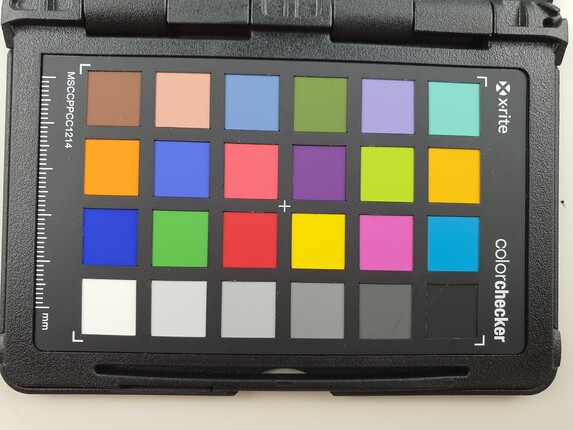
Accessories & Warranty
In addition to a quick charger and the corresponding USB cable, Samsung has included AKG-branded Type-C headphones in the box. These sound decent by bundled-headphone standards, but they will not blow you away. There is also a SIM tool for removing the SIM card tray.
The real highlight and one of the most important features of the Galaxy Note series is the S Pen, Samsung’s active pen. The Note 10 comes with replacement tips and a tool for swapping them too.
Samsung's accessories shop is well stocked again this year, with the company particularly pushing its AKG-branded Galaxy Buds. The wireless headphones offer up to six hours of use between charges, for which Samsung charges US$129.99. There are plenty of covers to adorn your Note 10 too, with Samsung selling silicone, leather and elaborate LED covers, the latter of which currently retails for US$54.99. You can buy replacement S-Pens, chargers and a wireless charger too. You can find the full list of Note 10-compatible accessories here.
The Note 10 comes with a 24-month limited manufacturer’s warranty. Please see our Guarantees, Return Policies & Warranties FAQ for country-specific information.
Input Devices & Operation
As we mentioned earlier, one of the Note 10’s selling points is its S-Pen, which supports up to 4,096 levels of pressure and has a 0.7 mm thick tip. Samsung has also integrated optical character recognition (OCR) within One UI that indexes handwritten notes.
Samsung continues to refine the S-Pen too, having brought a shutter button to the pen last year. Now, the S-Pen supports gestures, with it possible to scroll through photos in the Gallery app, adjust the volume by raising or lowering the pen and zooming in the Camera app by twisting the pen in a circular motion. Incidentally, Samsung has published an S-Pen SDK too.
The in-house camera app now supports augmented reality drawings that can be included in videos. This may be a gimmick, but it is a fun one nonetheless.
The Note 10 has an in-screen fingerprint scanner just as the Galaxy S10 does. Samsung has included a hint for where to put your finger when the display is off, but you must activate the always-on display (AoD) to enable this. You can still unlock the device without the prompt if you know where to place your finger though. Samsung has positioned the sensor towards the bottom of the display, which felt like a natural position for our hands. The sensor worked well during our tests, although Samsung enables a quick check authorisation by default, which unlocks the device quickly but is also less secure than a conventional capacitive fingerprint scanner. You can switch quick check off, but we often found that it then took several attempts for the scanner to recognise our registered fingers. In short, while the quick check is less secure, it will probably be more convenient for most people in daily use.
You can also use the front-facing camera for face unlocking, although this is less secure than using a fingerprint and is easily spoofed. Moreover, you must wake the device before you can use it, rendering it impractical in our opinion.
Finally, you could use the S-Pen to unlock the Note 10, but this only works if the pen is disconnected from the smartphone. While this prevents people from unlocking your smartphone, it is not as convenient as using a fingerprint.
Display
The Note 10 has a 6.3-inch AMOLED panel, which has become almost a standard size and panel type for modern flagships. However, its resolution is akin to a midrange device with Samsung opting for a 1080p panel instead of a 1440p one, as was the case with the Galaxy Note 9. The decision to include a 1080p panel also yields a 400 PPI pixel density, which is significantly lower than the 514 PPI of the display in the Galaxy Note 9. Overall, we do not approve of Samsung including a 1080p display in a 1,000-Euro (~US$1,100) device, especially when even flagship challengers like the OnePlus 7 Pro now have 1440p displays.
The Note 10 has an impressively bright display, with X-Rite i1Pro 2 measuring an average maximum luminosity of 757 cd/m². This only applies to when the device is set to automatic brightness though; the Note 10 cannot get anywhere near as bright when set to manual brightness. Incidentally, our Note review unit can get up to 9% brighter than the Galaxy Note 10+.
The display is not as evenly bright as the one in its bigger sibling though. While the Note 10 has a 91% evenly bright panel, which is on par with many of our comparison devices, the panel in the Galaxy Note 10+ has a 96% even backlight. We appreciate that this is a minor difference, but it is a tangible one, nonetheless.
| |||||||||||||||||||||||||
Brightness Distribution: 91 %
Center on Battery: 764 cd/m²
Contrast: ∞:1 (Black: 0 cd/m²)
ΔE ColorChecker Calman: 2.66 | ∀{0.5-29.43 Ø4.77}
ΔE Greyscale Calman: 3.2 | ∀{0.09-98 Ø5}
97.1% sRGB (Calman 2D)
Gamma: 2.073
CCT: 6326 K
| Samsung Galaxy Note10 Dynamic AMOLED, 2280x1080, 6.3" | Samsung Galaxy Note 9 Super AMOLED, 2960x1440, 6.4" | OnePlus 7 Pro AMOLED, 3120x1440, 6.7" | Xiaomi Mi 9T Pro AMOLED, 2340x1080, 6.4" | Huawei Mate 20 Pro OLED, 3120x1440, 6.3" | Apple iPhone Xs Max OLED, 2688x1242, 6.5" | |
|---|---|---|---|---|---|---|
| Screen | -33% | 19% | 7% | 15% | 17% | |
| Brightness middle (cd/m²) | 764 | 499 -35% | 586 -23% | 594 -22% | 576 -25% | 656 -14% |
| Brightness (cd/m²) | 757 | 506 -33% | 584 -23% | 607 -20% | 582 -23% | 659 -13% |
| Brightness Distribution (%) | 91 | 96 5% | 97 7% | 91 0% | 90 -1% | 88 -3% |
| Black Level * (cd/m²) | ||||||
| Colorchecker dE 2000 * | 2.66 | 4.62 -74% | 1.39 48% | 1.51 43% | 1.3 51% | 1.7 36% |
| Colorchecker dE 2000 max. * | 5.65 | 10.91 -93% | 2.7 52% | 4.27 24% | 3.5 38% | 2.8 50% |
| Greyscale dE 2000 * | 3.2 | 2.2 31% | 1.6 50% | 2.6 19% | 1.6 50% | 1.7 47% |
| Gamma | 2.073 106% | 2.103 105% | 2.243 98% | 2.219 99% | 2.18 101% | 1.998 110% |
| CCT | 6326 103% | 6115 106% | 6672 97% | 6390 102% | 6561 99% | 6487 100% |
* ... smaller is better
Screen Flickering / PWM (Pulse-Width Modulation)
| Screen flickering / PWM detected | 236 Hz | ||
The display backlight flickers at 236 Hz (worst case, e.g., utilizing PWM) . The frequency of 236 Hz is relatively low, so sensitive users will likely notice flickering and experience eyestrain at the stated brightness setting and below. In comparison: 53 % of all tested devices do not use PWM to dim the display. If PWM was detected, an average of 8083 (minimum: 5 - maximum: 343500) Hz was measured. | |||
As with all AMOLED panels, the Note 10 has a theoretically infinite contrast ratio and absolute 0 cd/m² black value. Its display is also HDR10+ certified for media playback.
One UI has two display colour options that Samsung calls Natural and Vivid. The former is the default mode and uses the narrower sRGB colour space. By contrast, the Vivid mode uses the wider DCI-P3 colour space and manual white balance calibration.
We took a closer look at our review unit’s display with a photo spectrometer and CalMAN analysis software, which determined that the Natural mode is more colour accurate out of the box. Natural mode covers almost all the sRGB colour space according to CalMAN, although it is not 100% reliable here. Optimising the white balance in Vivid mode results in lower DeltaE greyscale deviations than using Natural mode, but this does not have any effect on overall colour accuracy. Overall, Vivid mode is best for those who prefer punchy-looking colours over colour accuracy. Natural mode, as its name suggests, reproduces colours more naturally than Vivid mode does.
Display Response Times
| ↔ Response Time Black to White | ||
|---|---|---|
| 8 ms ... rise ↗ and fall ↘ combined | ↗ 5 ms rise | |
| ↘ 3 ms fall | ||
| The screen shows fast response rates in our tests and should be suited for gaming. In comparison, all tested devices range from 0.1 (minimum) to 240 (maximum) ms. » 21 % of all devices are better. This means that the measured response time is better than the average of all tested devices (20.2 ms). | ||
| ↔ Response Time 50% Grey to 80% Grey | ||
| 8 ms ... rise ↗ and fall ↘ combined | ↗ 3 ms rise | |
| ↘ 5 ms fall | ||
| The screen shows fast response rates in our tests and should be suited for gaming. In comparison, all tested devices range from 0.165 (minimum) to 636 (maximum) ms. » 19 % of all devices are better. This means that the measured response time is better than the average of all tested devices (31.6 ms). | ||
The Note 10 has stable viewing angles thanks to its AMOLED panel. However, its curved edges cause slight colour distortions at acute viewing angles. Our review unit remains usable outdoors under intense sunlight though, with its ambient light sensor ramping up brightness quickly and appropriately.
Performance
Like every year, Samsung equips the Note 10 with a Qualcomm Snapdragon or in-house Exynos SoC, depending on where you buy it. You will likely find the former in the US and China, with Samsung sticking to Exynos for other markets like Europe and South Korea.
Our review unit, being a European variant, has an Exynos 9825 SoC. The Note 10 is the first device to enter our test lab with the octa-core processor, which has two Samsung high-speed cores and six ARM Cortex power-saving cores. In short, the Exynos 9825 offers only minor performance improvements over the Exynos 9820. We suspect that the switch to a smaller fabrication process has helped improve efficiencies and performance, but perhaps not to the extent that people had hoped.
The Note 10 has a clear edge over its predecessor in synthetic benchmarks, while our review unit even outscores our Snapdragon 855-powered comparison devices in some benchmarks too. Subjectively, the Note 10 and Galaxy Note 10+ perform equally well, which synthetic benchmarks reinforce.
We also encountered no performance issues during our tests. Our review unit handled heavy multitasking and complex apps with ease, so you should experience no system lags or stutters in daily use.
| PCMark for Android | |
| Work performance score (sort by value) | |
| Samsung Galaxy Note10 | |
| Samsung Galaxy Note 9 | |
| OnePlus 7 Pro | |
| Xiaomi Mi 9T Pro | |
| Huawei Mate 20 Pro | |
| Average Samsung Exynos 9825 (11011 - 11813, n=2) | |
| Work 2.0 performance score (sort by value) | |
| Samsung Galaxy Note10 | |
| Samsung Galaxy Note 9 | |
| OnePlus 7 Pro | |
| Xiaomi Mi 9T Pro | |
| Huawei Mate 20 Pro | |
| Average Samsung Exynos 9825 (8801 - 9027, n=2) | |
| Basemark GPU 1.1 | |
| 1920x1080 Vulkan Medium Offscreen (sort by value) | |
| Samsung Galaxy Note10 | |
| Samsung Galaxy Note 9 | |
| OnePlus 7 Pro | |
| Huawei Mate 20 Pro | |
| Average Samsung Exynos 9825 (39.1 - 39.7, n=2) | |
| Vulkan Medium Native (sort by value) | |
| Samsung Galaxy Note10 | |
| Samsung Galaxy Note 9 | |
| OnePlus 7 Pro | |
| Huawei Mate 20 Pro | |
| Average Samsung Exynos 9825 (27.5 - 37.3, n=2) | |
| 1920x1080 OpenGL Medium Offscreen (sort by value) | |
| Samsung Galaxy Note10 | |
| Samsung Galaxy Note 9 | |
| OnePlus 7 Pro | |
| Huawei Mate 20 Pro | |
| Average Samsung Exynos 9825 (33.4 - 33.7, n=2) | |
| AnTuTu v7 - Total Score (sort by value) | |
| Samsung Galaxy Note10 | |
| Samsung Galaxy Note 9 | |
| OnePlus 7 Pro | |
| Xiaomi Mi 9T Pro | |
| Huawei Mate 20 Pro | |
| Apple iPhone Xs Max | |
| Average Samsung Exynos 9825 (347082 - 347229, n=2) | |
| VRMark - Amber Room (sort by value) | |
| Samsung Galaxy Note10 | |
| Samsung Galaxy Note 9 | |
| OnePlus 7 Pro | |
| Huawei Mate 20 Pro | |
| Average Samsung Exynos 9825 (4985 - 4996, n=2) | |
| Basemark ES 3.1 / Metal - offscreen Overall Score (sort by value) | |
| Samsung Galaxy Note10 | |
| Samsung Galaxy Note 9 | |
| OnePlus 7 Pro | |
| Huawei Mate 20 Pro | |
| Apple iPhone Xs Max | |
| Average Samsung Exynos 9825 (n=1) | |
| Average of class Smartphone (205 - 7731, n=34, last 2 years) | |
The Note 10 performs well in browser benchmarks too, but it cannot compete with the fastest devices in our comparison tables. The preinstalled Samsung Browser loads websites and media content quickly though, while scrolling animations should always remain smooth too.
| Jetstream 2 - 2.0 Total Score | |
| Average of class Smartphone (23.8 - 387, n=149, last 2 years) | |
| OnePlus 7 Pro (Chrome 74) | |
| Xiaomi Mi 9T Pro (Chrome 75) | |
| Huawei Mate 20 Pro (Chrome 74) | |
| Samsung Galaxy Note10 (Chrome 76) | |
| Average Samsung Exynos 9825 (42.7 - 48, n=2) | |
| Speedometer 2.0 - Result 2.0 | |
| Average of class Smartphone (15.2 - 643, n=120, last 2 years) | |
| OnePlus 7 Pro (Chome 74) | |
| Samsung Galaxy Note10 (Chome 76) | |
| Average Samsung Exynos 9825 (n=1) | |
| Huawei Mate 20 Pro (Chrome 71) | |
| Xiaomi Mi 9T Pro (Chrome 75) | |
| WebXPRT 3 - Overall | |
| Average of class Smartphone (38 - 380, n=30, last 2 years) | |
| Apple iPhone Xs Max (Safari 12) | |
| Huawei Mate 20 Pro (Chrome 69) | |
| OnePlus 7 Pro (Chrome 74) | |
| Average Samsung Exynos 9825 (97 - 118, n=2) | |
| Xiaomi Mi 9T Pro (Chrome 75) | |
| Samsung Galaxy Note10 (Chrome 76) | |
| Samsung Galaxy Note 9 (Chrome 68) | |
| Octane V2 - Total Score | |
| Average of class Smartphone (2228 - 126661, n=195, last 2 years) | |
| Apple iPhone Xs Max (Safari 12) | |
| OnePlus 7 Pro (Chrome 74) | |
| Huawei Mate 20 Pro (Chrome 69) | |
| Xiaomi Mi 9T Pro (Chrome 75) | |
| Average Samsung Exynos 9825 (18908 - 19135, n=2) | |
| Samsung Galaxy Note10 (Chrome 76) | |
| Samsung Galaxy Note 9 (Chrome 68) | |
| Mozilla Kraken 1.1 - Total | |
| Samsung Galaxy Note 9 (Chrome 68) | |
| Average Samsung Exynos 9825 (2478 - 2528, n=2) | |
| Samsung Galaxy Note10 (Chrome 76) | |
| Xiaomi Mi 9T Pro (Chrome 75) | |
| OnePlus 7 Pro (Chrome 74) | |
| Huawei Mate 20 Pro (Chrome 69) | |
| Average of class Smartphone (257 - 28190, n=155, last 2 years) | |
| Apple iPhone Xs Max (Safari 12) | |
* ... smaller is better
The Note 10 comes with UFS 3.0 flash storage just like the Galaxy Note 10+, which offers nearly twice the transfer speeds of UFS 2.1. Our review unit achieved impressive transfer speeds in AndroBench benchmarks, with it comfortably outperforming the UFS 3.0-equipped OnePlus 7 Pro in all but one test too. In practice, our review unit loads apps and data quickly.
| Samsung Galaxy Note10 | Samsung Galaxy Note 9 | OnePlus 7 Pro | Xiaomi Mi 9T Pro | Huawei Mate 20 Pro | Apple iPhone Xs Max | Average 256 GB UFS 3.0 Flash | Average of class Smartphone | |
|---|---|---|---|---|---|---|---|---|
| AndroBench 3-5 | -58% | -33% | -41% | -37% | 2% | 102% | ||
| Sequential Read 256KB (MB/s) | 1478 | 805 -46% | 1468 -1% | 809 -45% | 853 -42% | 1547 ? 5% | 2248 ? 52% | |
| Sequential Write 256KB (MB/s) | 590 | 196 -67% | 387 -34% | 196.9 -67% | 196.4 -67% | 575 ? -3% | 1887 ? 220% | |
| Random Read 4KB (MB/s) | 194.2 | 134 -31% | 174.1 -10% | 142.5 -27% | 157.4 -19% | 210 ? 8% | 299 ? 54% | |
| Random Write 4KB (MB/s) | 191.9 | 21 -89% | 24.8 -87% | 148.5 -23% | 157.8 -18% | 188.5 ? -2% | 346 ? 80% | |
| Sequential Read 256KB SDCard (MB/s) | 77 ? | 83.2 ? | 70.6 ? | |||||
| Sequential Write 256KB SDCard (MB/s) | 66.7 ? | 72.4 ? | 59.8 ? |
Games
The ARM Mali-G76 MP12 remains a competent GPU and can handle all modern games smoothly at maximum frame rates. There are a few frame-rate drops in Shadow Fight 3 regardless of graphics settings, but our review unit still averages just over 59 FPS at high graphics. Asphalt 9: Legends continues to only support 30 FPS, so there are no concerns here. The touchscreen and associated sensors worked perfectly during our gaming tests too, which we confirmed by playing Temple Run 2.
Samsung has included Game Launcher and Game Booster within One UI, the former of which the manufacturer describes as a games control centre. The latter, as its name suggests, optimises performance for a better gaming experience. Game Booster starts automatically when a game is launched and contains options to prevent accidental touches or hide notifications.
Emissions
Temperature
Our review unit runs rather hot even when idling, with surface temperatures averaging 31.3 °C. Expectedly, temperatures rise under load, with only the bottom third of the device remaining below 40 °C. The top third of the display reaches a toasty 45 °C, which will feel uncomfortable to the touch.
We also subjected the Note 10 to GFXBench benchmarks to see whether it could maintain its peak performance under extreme load conditions. We ran the T-Rex and Manhattan benchmarks 30 times, measuring any changes in frame rates or battery level as the benchmark ran on a loop. As we discovered in our Galaxy Note 10+ tests, the Exynos 9825 has no problem with the older T-Rex benchmark, but it throttles by almost 40% by the end of the more complex Manhattan benchmark. Overall, you may notice reduced performance towards the end of a prolonged gaming session.
(-) The maximum temperature on the upper side is 45.9 °C / 115 F, compared to the average of 35.2 °C / 95 F, ranging from 21.9 to 247 °C for the class Smartphone.
(±) The bottom heats up to a maximum of 43.1 °C / 110 F, compared to the average of 34 °C / 93 F
(+) In idle usage, the average temperature for the upper side is 31.1 °C / 88 F, compared to the device average of 32.9 °C / 91 F.
Speakers
The Note 10 has stereo speakers, although you will be hard-pressed to find both. The main driver can be found on the bottom edge of the device, while the second speaker technically has two outlets. The first is a small hole next to the SIM card tray, with the second being the earpiece, which JerryRigEverything claims is only five human hairs thick. The Note 10 can use Dolby Atmos to create a surround sound effect too, although audio sounds balanced and clear at stock settings. The speakers overemphasise high-pitched frequencies at high volumes, which makes audio sound tinny. Dialling the volume back one step makes for a much pleasanter listening experience in our opinion. It is worth noting that our review unit vibrates a lot when playing audio over its speakers, so be careful to keep a tight grip on your Note 10 if you are playing music or watching a video while holding it.
The included AKG headphones are also treble-heavy, which we would happily exchange for more bass. The headphones still sound good though, at least by bundled-headphone standards. Oddly, our review unit takes a while to switch between outputting audio over its speakers and its Type-C port. Hence, you may find that the speakers in your Note 10 briefly continue to play audio even with headphones connected. Our review unit is picky about Type-C to 3.5 mm jack adapters too, with some failing to work despite having no problems with other devices. We only mention this as Samsung does not include an adapter in the box, so we recommend trying one out before you buy it, where possible.
You can use Bluetooth for connecting external audio equipment too, with the dual-audio feature of previous Samsung devices making a return. This means that you can stream audio to two sources simultaneously, like speakers in different rooms. Incidentally, the Samsung Galaxy Buds have an easy pairing feature like Apple AirPods do, which is a nice touch. Disappointingly, Samsung still refuses to support the aptX HD codec, although the Note 10 supports most other modern and high-resolution codecs.
Samsung Galaxy Note10 audio analysis
(±) | speaker loudness is average but good (80.9 dB)
Bass 100 - 315 Hz
(-) | nearly no bass - on average 22.1% lower than median
(±) | linearity of bass is average (9.9% delta to prev. frequency)
Mids 400 - 2000 Hz
(+) | balanced mids - only 3.9% away from median
(+) | mids are linear (5.2% delta to prev. frequency)
Highs 2 - 16 kHz
(+) | balanced highs - only 3.7% away from median
(±) | linearity of highs is average (8.3% delta to prev. frequency)
Overall 100 - 16.000 Hz
(±) | linearity of overall sound is average (20.6% difference to median)
Compared to same class
» 36% of all tested devices in this class were better, 9% similar, 55% worse
» The best had a delta of 11%, average was 35%, worst was 134%
Compared to all devices tested
» 54% of all tested devices were better, 8% similar, 38% worse
» The best had a delta of 4%, average was 24%, worst was 134%
Samsung Galaxy Note 9 audio analysis
(-) | not very loud speakers (71.6 dB)
Bass 100 - 315 Hz
(-) | nearly no bass - on average 15.6% lower than median
(±) | linearity of bass is average (10.1% delta to prev. frequency)
Mids 400 - 2000 Hz
(+) | balanced mids - only 2.9% away from median
(+) | mids are linear (4.3% delta to prev. frequency)
Highs 2 - 16 kHz
(+) | balanced highs - only 1.6% away from median
(+) | highs are linear (5.7% delta to prev. frequency)
Overall 100 - 16.000 Hz
(±) | linearity of overall sound is average (16.2% difference to median)
Compared to same class
» 6% of all tested devices in this class were better, 5% similar, 90% worse
» The best had a delta of 11%, average was 35%, worst was 134%
Compared to all devices tested
» 25% of all tested devices were better, 5% similar, 69% worse
» The best had a delta of 4%, average was 24%, worst was 134%
Power Management
Power Consumption
Our review unit consumes around 0.25 W at standby, which is higher than the OnePlus 7 Pro but 50% lower than what the Galaxy Note 9 consumes. The Note 10 consumes between 0.9 W and 2 W at idle, which puts it on par with many of our comparison devices. Its power draw rises to a peak of 10.5 W under load, where it also averages 7.7 W. Both values are unmatched by any of our comparison devices, which is surprising considering that the Note 10 also has a smaller and lower-resolution display.
| Off / Standby | |
| Idle | |
| Load |
|
Key:
min: | |
| Samsung Galaxy Note10 3500 mAh | Samsung Galaxy Note 9 4000 mAh | OnePlus 7 Pro 4000 mAh | Xiaomi Mi 9T Pro 4000 mAh | Huawei Mate 20 Pro 4200 mAh | Apple iPhone Xs Max 3174 mAh | Average Samsung Exynos 9825 | Average of class Smartphone | |
|---|---|---|---|---|---|---|---|---|
| Power Consumption | -17% | -9% | 22% | -3% | 13% | -1% | 1% | |
| Idle Minimum * (Watt) | 0.9 | 0.9 -0% | 0.9 -0% | 0.7 22% | 0.95 -6% | 1 -11% | 0.8 ? 11% | 0.847 ? 6% |
| Idle Average * (Watt) | 1.2 | 1.9 -58% | 1.8 -50% | 1 17% | 2.17 -81% | 1.4 -17% | 1.505 ? -25% | 1.446 ? -21% |
| Idle Maximum * (Watt) | 2 | 3.7 -85% | 2.9 -45% | 1.3 35% | 2.25 -13% | 1.7 15% | 1.96 ? 2% | 1.63 ? 18% |
| Load Average * (Watt) | 7.7 | 5.3 31% | 5.5 29% | 5.2 32% | 4.47 42% | 4.6 40% | 7.64 ? 1% | 6.95 ? 10% |
| Load Maximum * (Watt) | 10.5 | 7.6 28% | 8.2 22% | 10 5% | 6.15 41% | 6.7 36% | 9.92 ? 6% | 11.3 ? -8% |
* ... smaller is better
Battery Life
Samsung equips the Note 10 with a 3,500 mAh battery, which is a 500 mAh downgrade on the battery in the Galaxy Note 9. All but the iPhone XS Max of our comparison devices have at least 4,000 mAh batteries, so it is unsurprising to see the Note 10 finish dead last in our battery life comparison tables.
Our review unit lasted for 9:43 hours in our practical Wi-Fi test, which should represent about one workday’s use between charges. You may even stretch that to two days if you use your device sparingly, but it is several hours shorter than the runtimes that all our comparison devices achieved.
While the Galaxy Note 10+ supports 45 W fast charging, Samsung limits the Note 10 to just 25 W. Moreover, the Note 10 supports 12 W Qi wireless charging, 3 W less than the Galaxy Note 10+. 25 W wired charging still delivers a full recharge in 90 minutes though and is a huge leap over the charging capacity of the Galaxy Note 9. Regardless, these small differences between the Note 10 and Galaxy Note 10+ reinforce the idea that Samsung has hobbled the potential of the Note 10 to push Galaxy Note 10+ sales.
| Samsung Galaxy Note10 3500 mAh | Samsung Galaxy Note 9 4000 mAh | OnePlus 7 Pro 4000 mAh | Xiaomi Mi 9T Pro 4000 mAh | Huawei Mate 20 Pro 4200 mAh | Apple iPhone Xs Max 3174 mAh | |
|---|---|---|---|---|---|---|
| Battery runtime | 28% | 13% | 21% | 20% | 3% | |
| Reader / Idle (h) | 23.2 | 28.1 21% | 29.1 25% | 29.5 27% | 29.1 25% | 21.8 -6% |
| H.264 (h) | 13.4 | 14.9 11% | 13.4 0% | 16.5 23% | 14.2 6% | 13.4 0% |
| WiFi v1.3 (h) | 9.7 | 13.2 36% | 12.8 32% | 12.7 31% | 12.8 32% | 12.4 28% |
| Load (h) | 4.1 | 5.9 44% | 3.9 -5% | 4.2 2% | 4.7 15% | 3.7 -10% |
Pros
Cons
Verdict
In some ways, the Galaxy Note 10 is a step backwards from the Note 9. The Note 10 has a lesser battery than its predecessor, along with a smaller and lower-resolution display. In short, it seems that Samsung sees the Galaxy Note 10+ as the actual successor to the Note 9, with the Note 10 being a cheaper entry-level model to the Note series.
The Note 10 has better cameras than the Galaxy Note 9, and we welcome the inclusion of an ultra-wide-angle lens. However, we expected more from the Note 10 here, principally because of its price. It has been a few generations since Samsung made any great leaps forward in camera technology, and the competition has caught up. The Note 10 has a good and versatile set of cameras, but they do not lead the way as previous Note and Galaxy S series devices once did.
Moreover, much remains unchanged from the Note 9, with the new fast charging technology, S-Pen gestures, and faster connectivity being the only hardware reasons to upgrade from the Note 9 to the Note 10. Note 9 owners may still want to switch to the Note 10 for its design, but we would only recommend doing so over the Note 10+ to save money or if you prefer a more compact smartphone; the Note 10+ surpasses the Note 10 in all other areas.
Think of the Galaxy Note 10 as an entry-level to the Note series, with it offering a slimmed-down experience compared to the Note 10+. Little has changed from the Note 9 too, with some features also having been removed.
Worse still, Samsung has removed the 3.5 mm jack and microSD card reader, both of which the company included in the Note 9. Samsung reserves microSD card expansion for the Note 10+, although this also lacks a headphone jack. We suspect that our review unit’s comparatively poor Wi-Fi performance is an anomaly that Samsung will fix with a software update. It is disappointing that Samsung could not get this right upon the Note 10 series' release though.
The Galaxy Note 10 is an excellent smartphone and one which offers a more rounded experience than many other modern flagships do. The new features that Samsung has brought to the S-Pen may persuade some people to pick up the Note 10, but it lacks the value for money that the Note 9 now offers thanks to hefty price cuts. Ultimately, the Note 10 is a tough sell, especially when Samsung previously marketed the Note series as its most feature-rich smartphone.
Please note that the Galaxy Note 10 is one of the first smartphones that we have scored using our new v7 rating system. We will be re-assessing previous flagships with this new methodology in the coming weeks.
Samsung Galaxy Note10
- 09/03/2022 v7 (old)
Florian Schmitt


